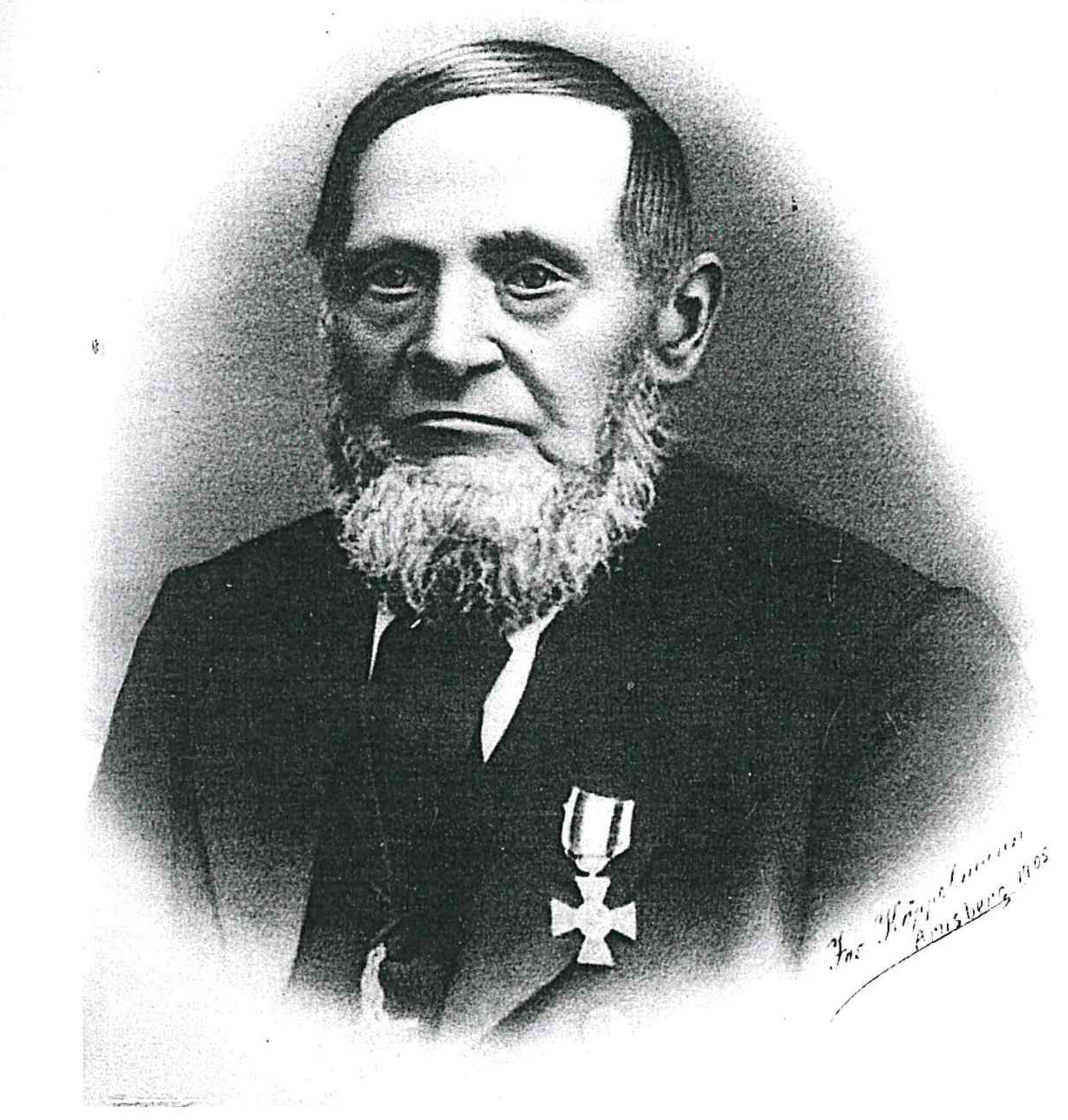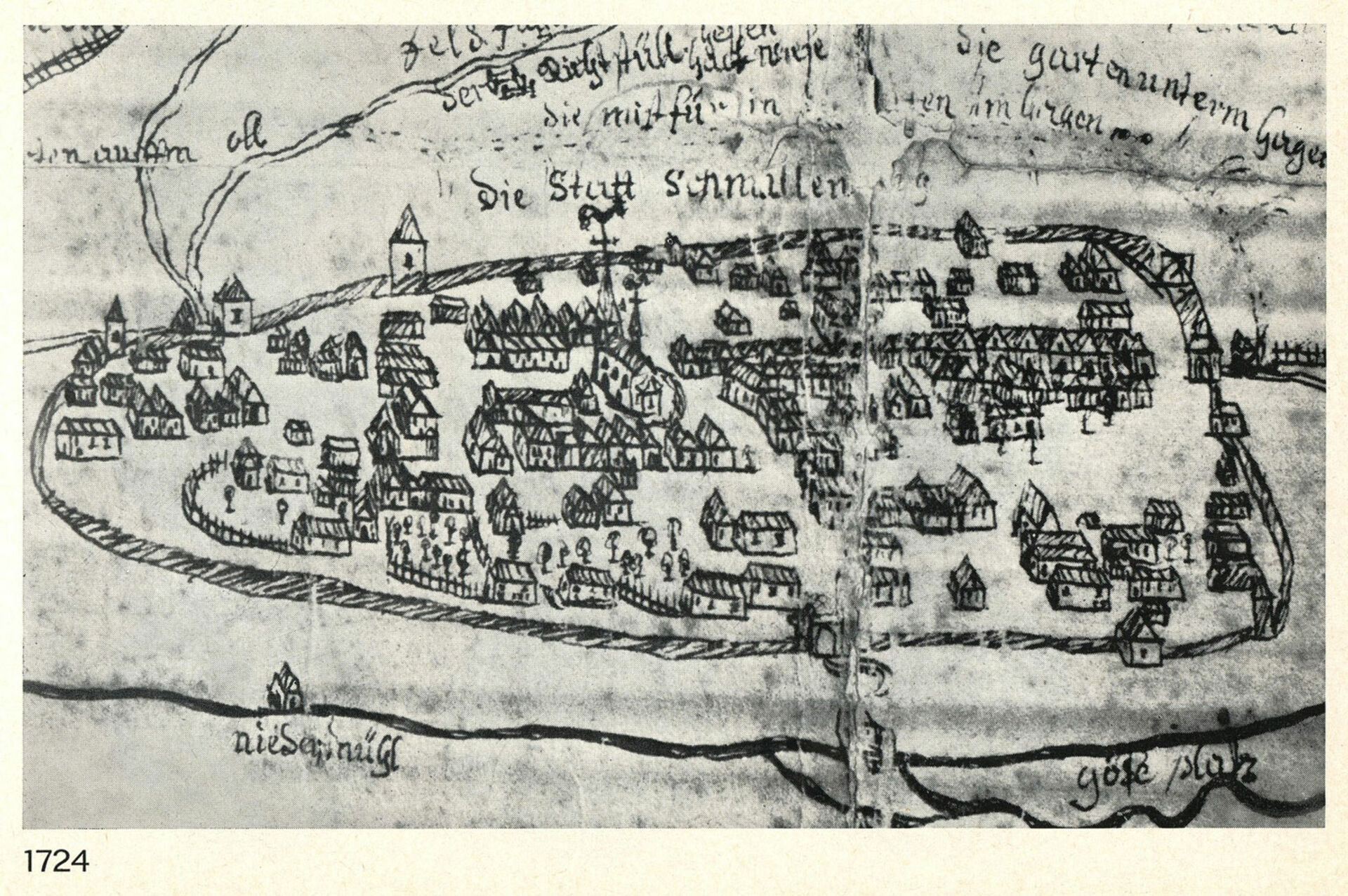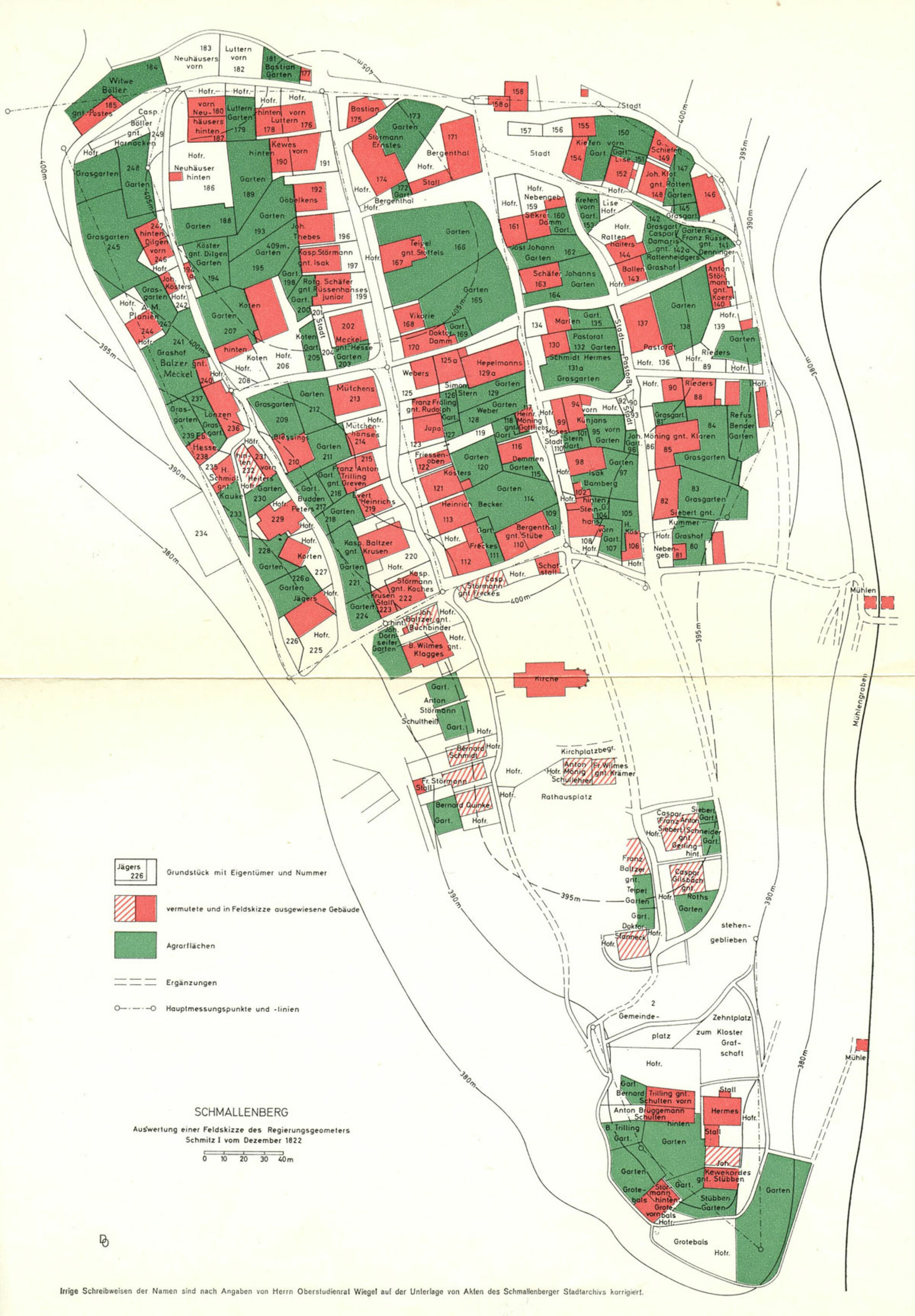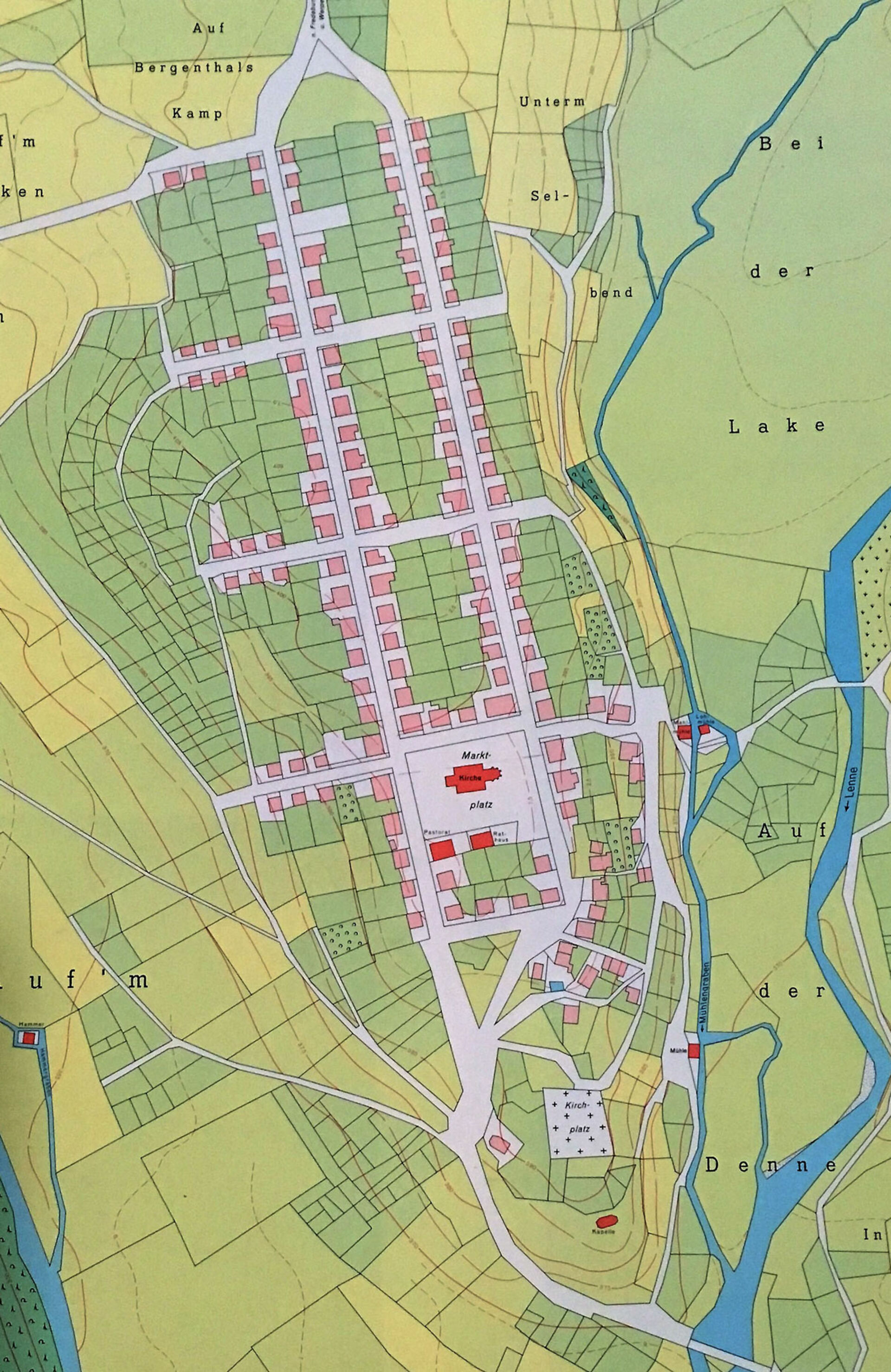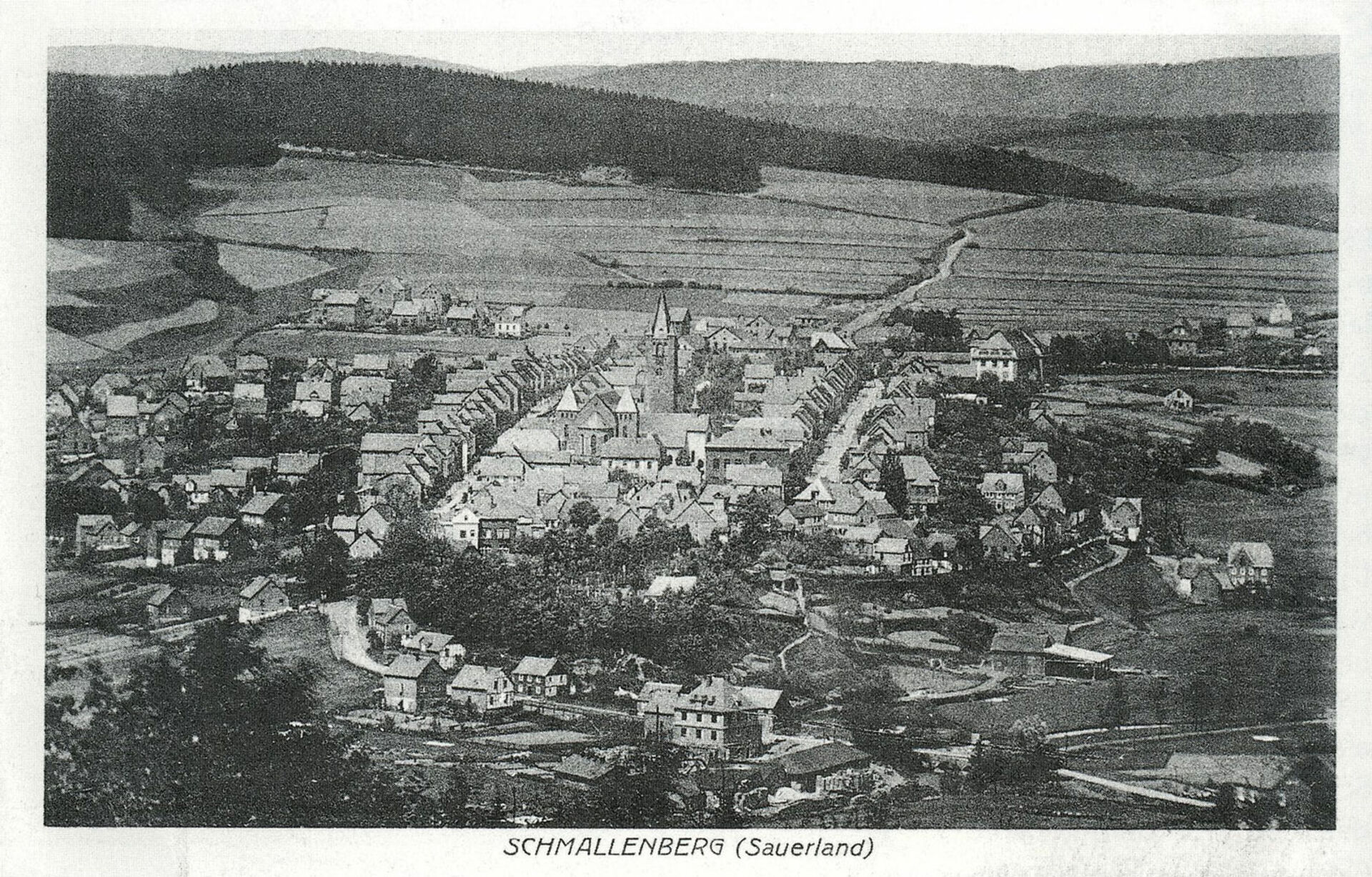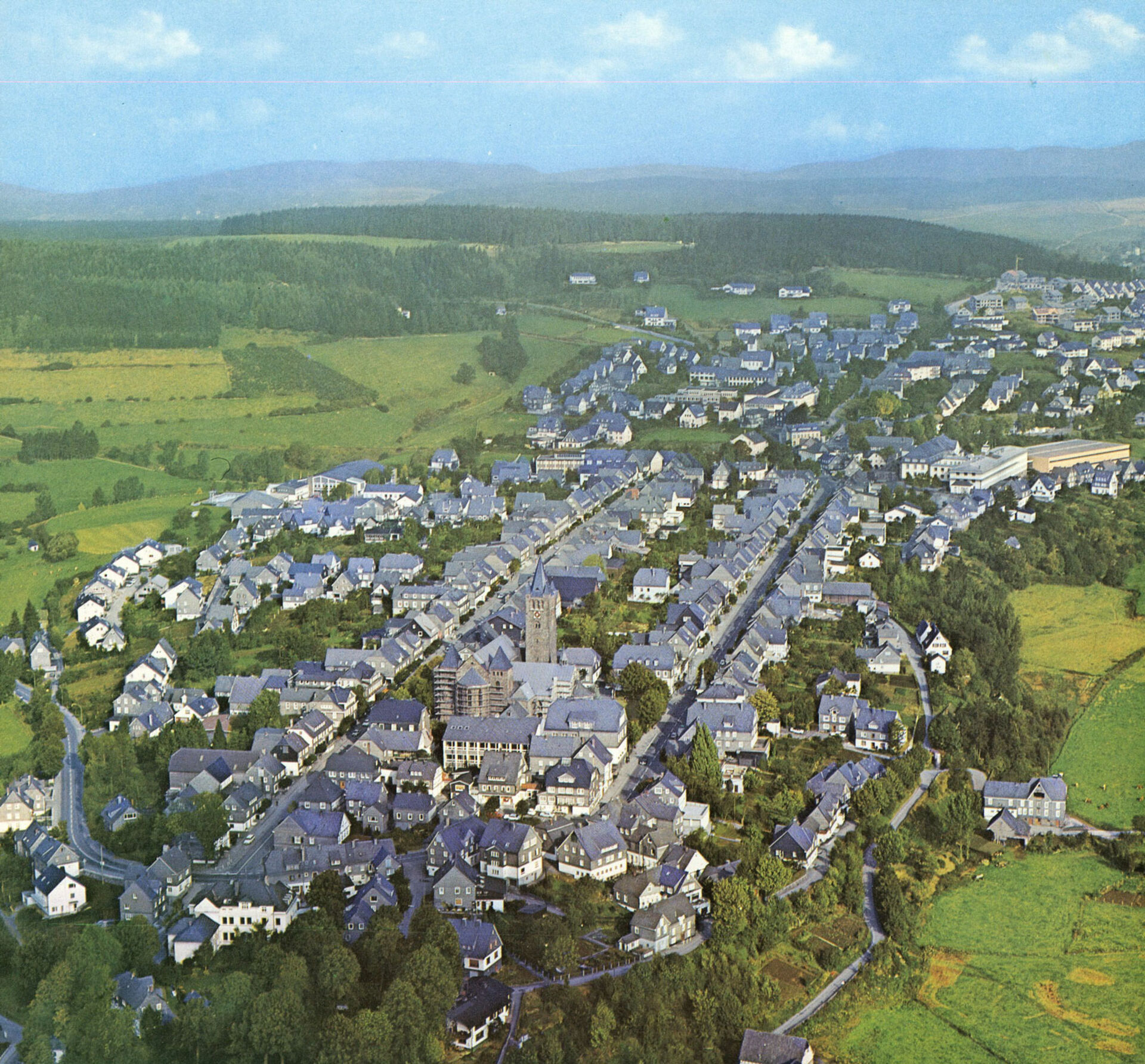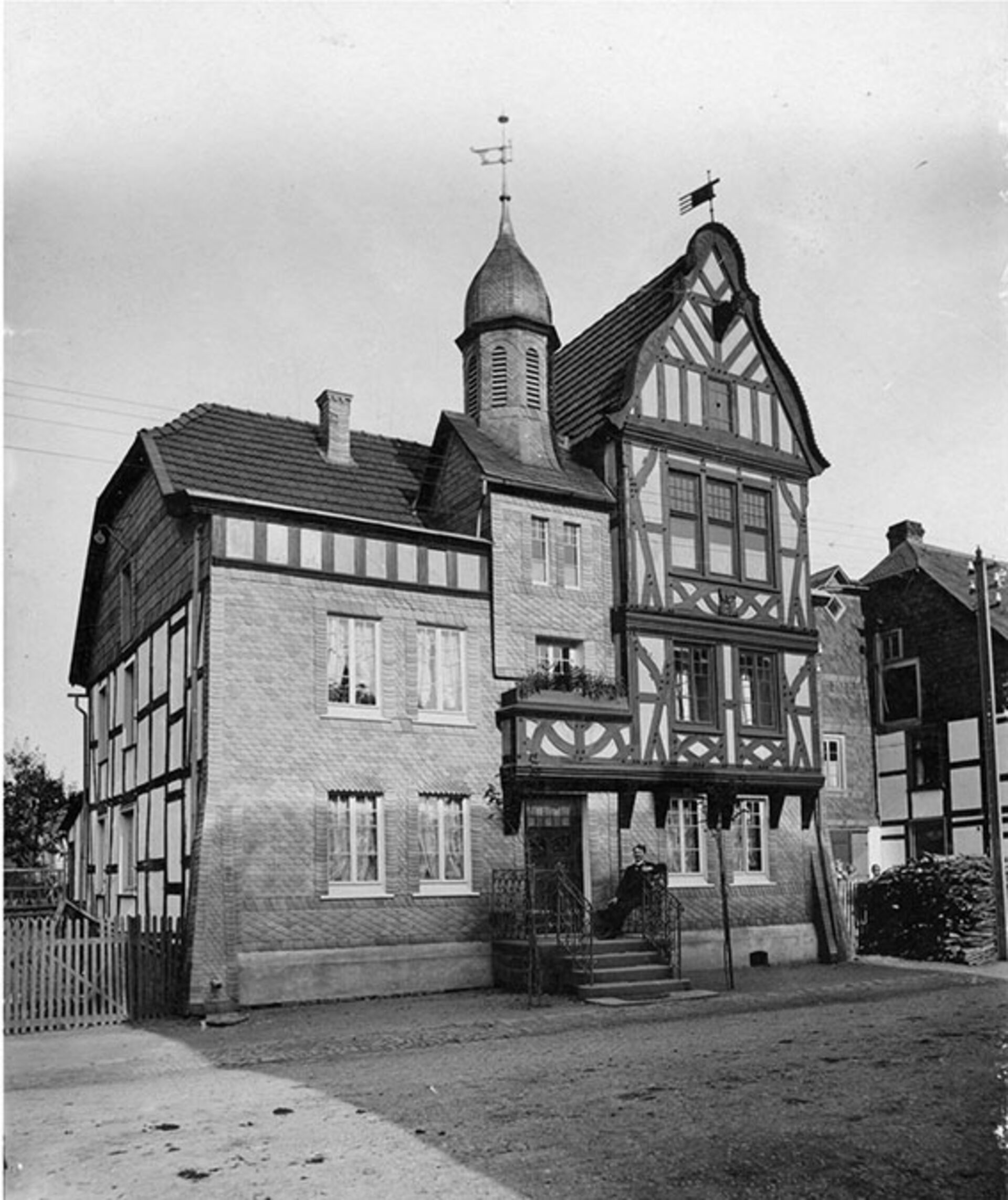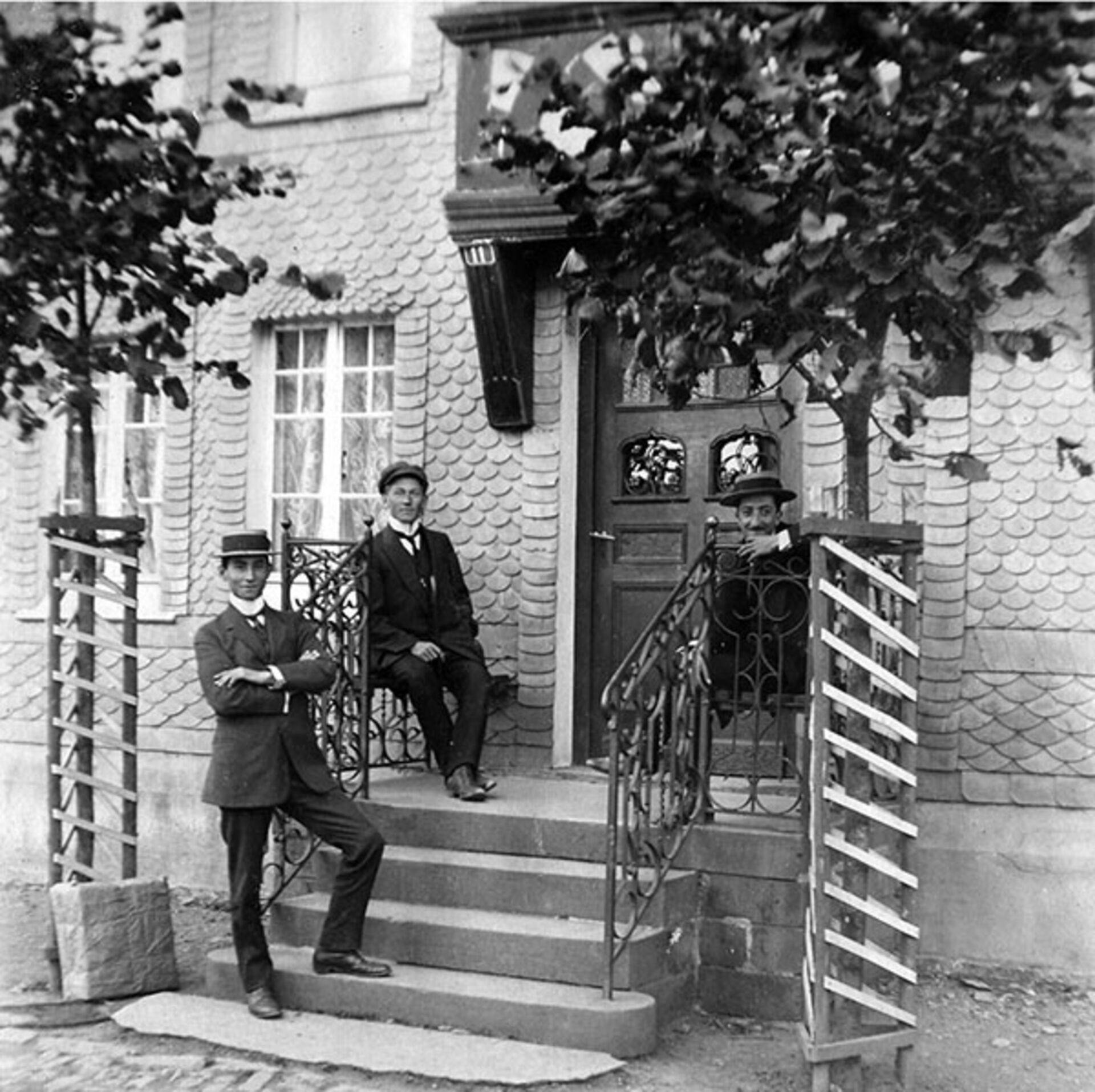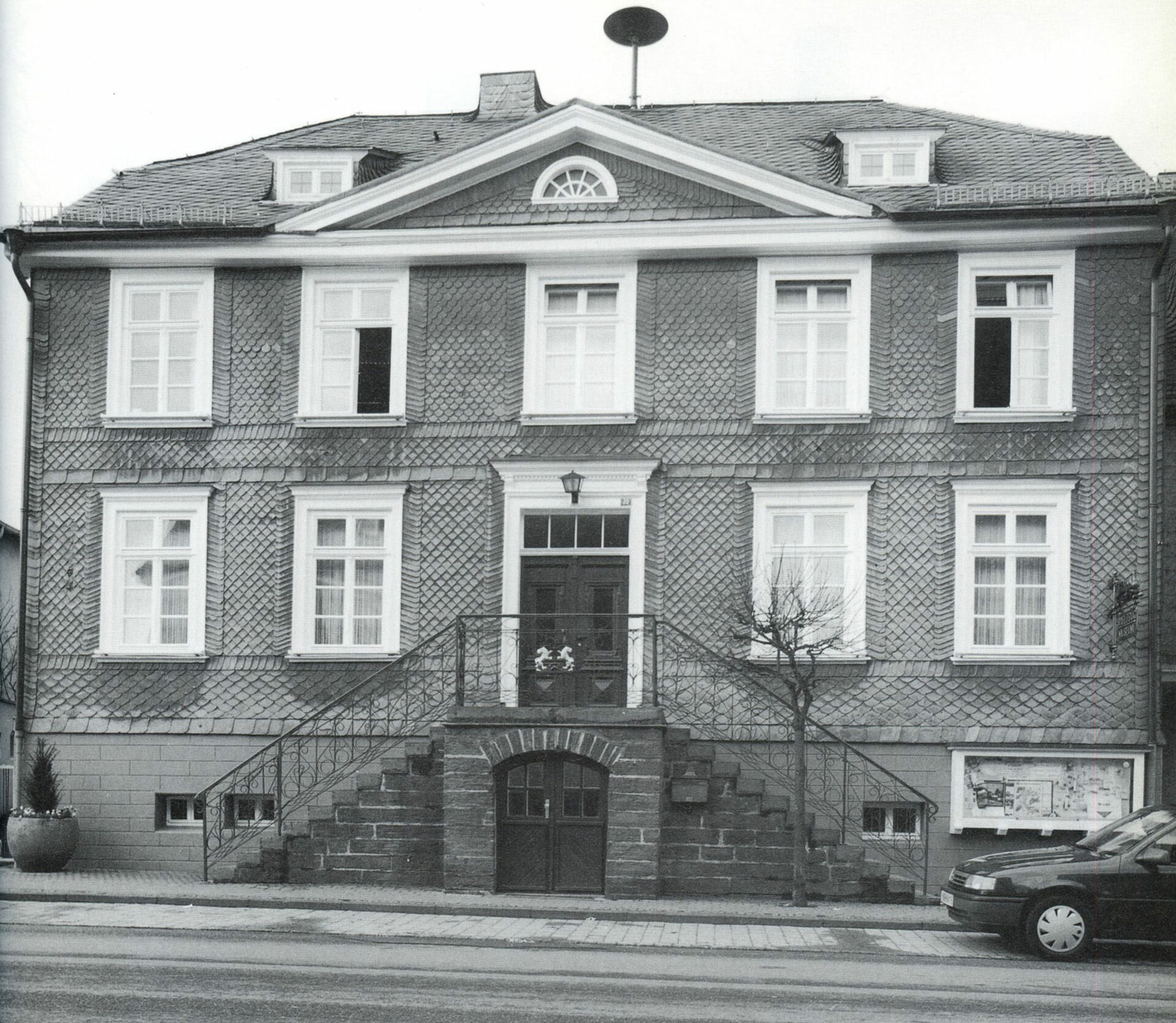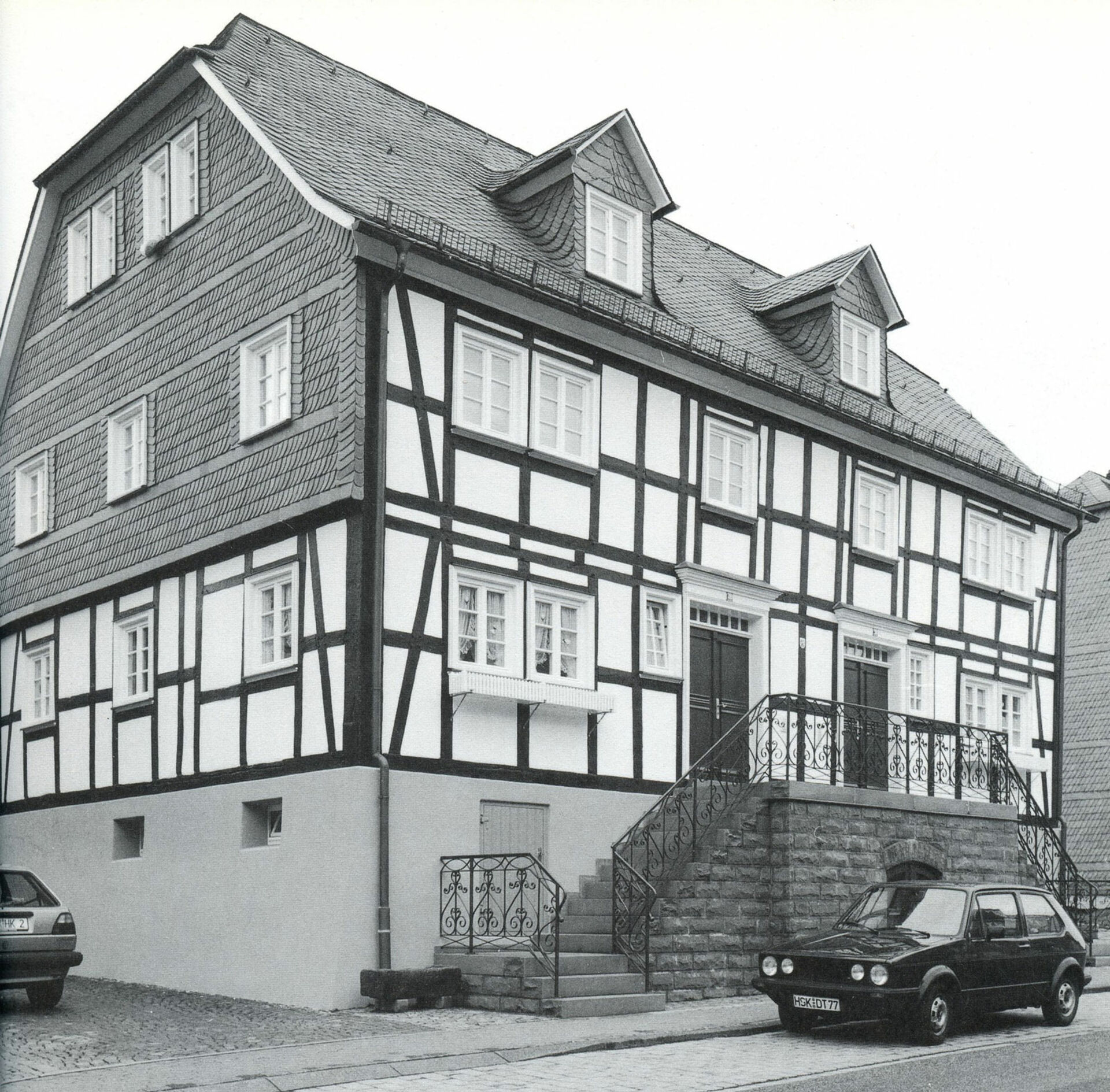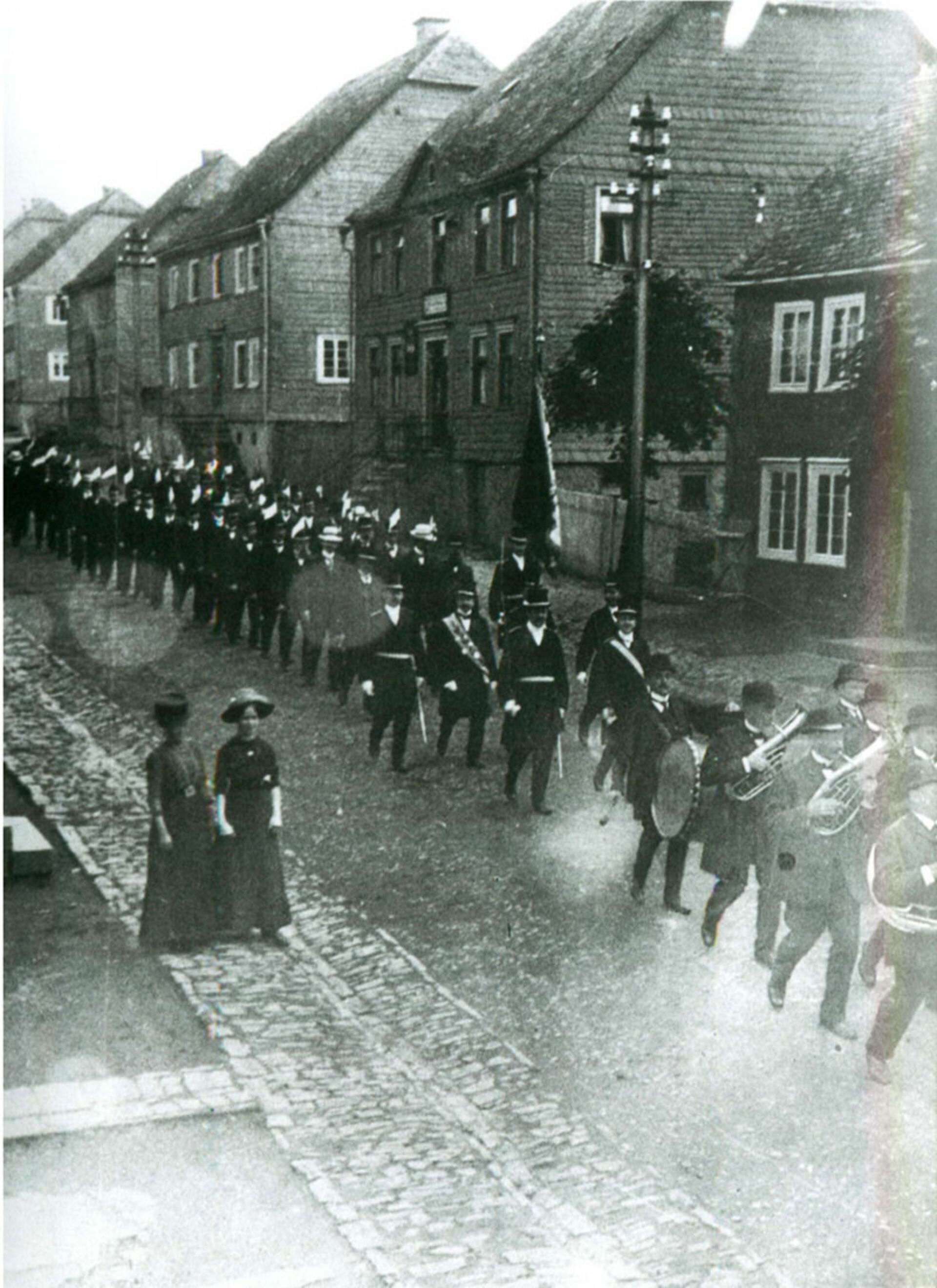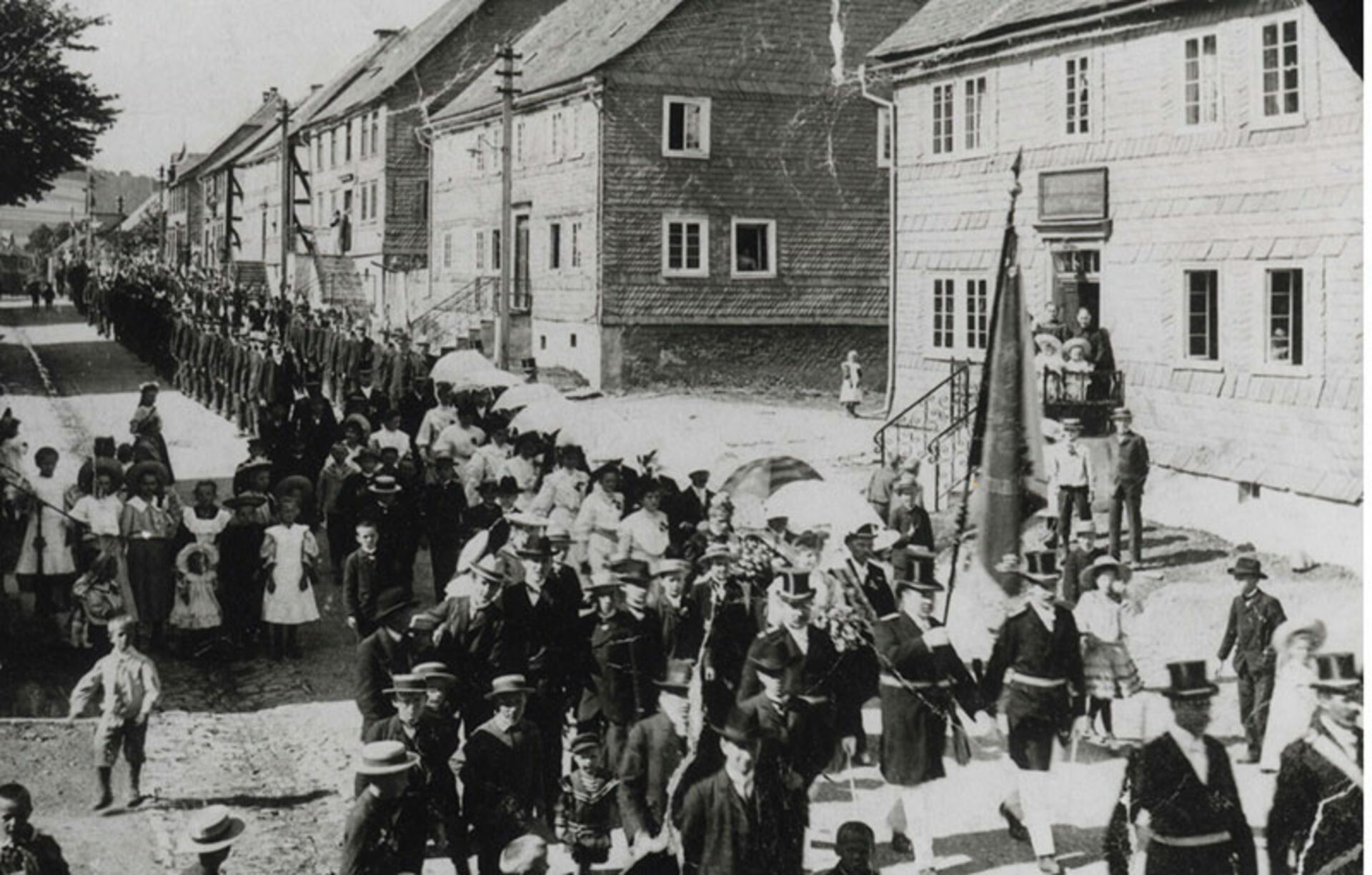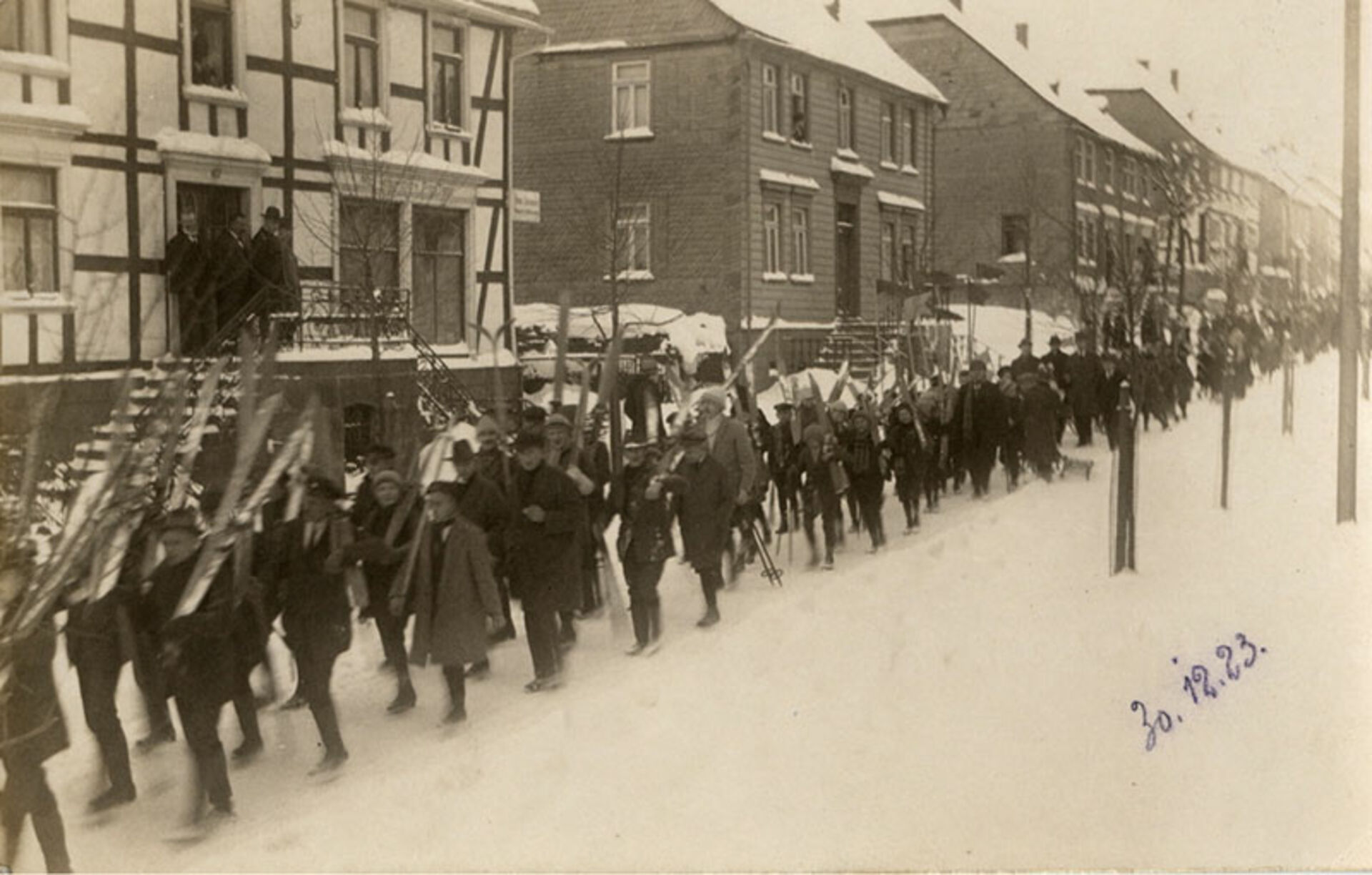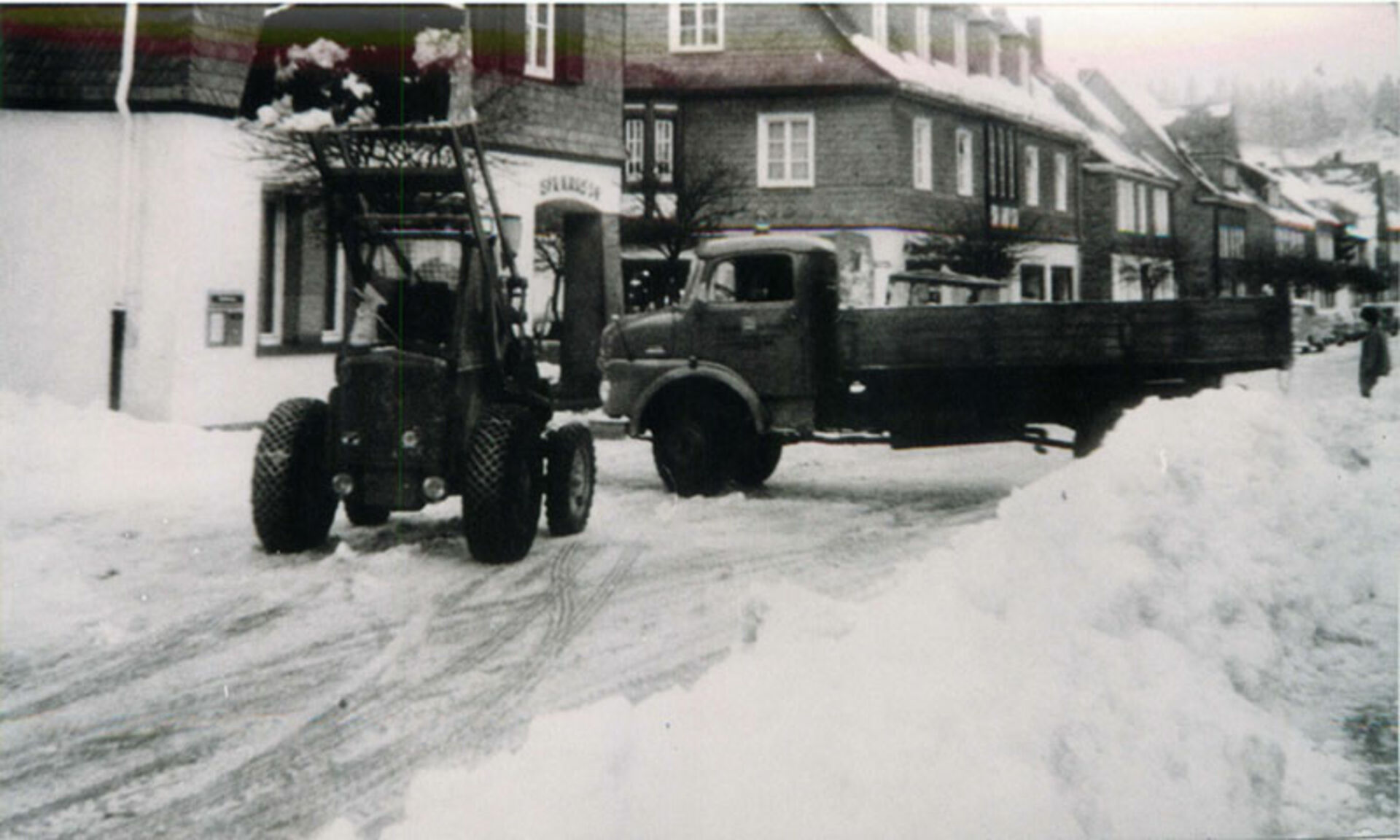The reconstruction from 1822
Jewel of classicist urban planning
Information points:
- Residential building Weststraße 32: Mayor Clemens Dham's residential building; former boarding school
- Residential building Weststraße 38/40 (first semi-detached house in Westphalia)
- Residential building Weststraße 33
The fire of 1822
On October 31, 1822, a devastating town fire destroyed the majority of Schmallenberg's 151 houses. It broke out in the south of the town near the "Stübben Haus", which stood next to the Schmales Haus and today's town hall. The Schmale Haus (today's town archive) is one of the few that survived the fire.
Here you can read the report by chronicler Arnold Dham.
"At 10 o'clock in the morning, when several citizens had left and gone out, the call of fire went out; the fire bell was pulled. Now the fire broke out down in the town at Stübben's house on the square, which was just the last house and faced south-east. The wind drove the blazing flames straight onto Hermes' building and the house. .... The fire spread like lightning and in a few minutes you could see the front and rear shoulders and Groetel's house in flames (...). It was not possible to resist the fire when the water left. Although people flocked from the neighboring villages to help, nothing could be started, except that movables were saved; for the fire was chased by the wind as fast as possible to the Mittelstraße [today's Weststraße from the church to the boarding school building] and Hinterstraße [no longer existing, western parallel street of today's Weststraße]. This meant that the flames could be seen raging crosswise in the streets, so that nobody could pass. In two hours, 131 houses with all their fruit, food, provisions and chattels were reduced to rubble and no one was able to save anything. 31 cellars, which were fireproof, remained intact; but everything else had collapsed, and everything that was in them was burned (...)
The frightening roar of the wind, the roaring and puffing of the flames, the crackling of the fruit, the crashing of the collapsing houses, the blazing flames from all the food put the citizens in the greatest fear and anxiety, and they seemed to be completely stunned. They had encamped around the town, each with his rescued belongings, and had to lie out in the open for several nights until they found shelter in the neighboring villages. The cattle were running around in the fields and gardens in confusion and bellowing outrageously." [Dham, Franz Arnold, Chronica Schmallenbergensis, in: Schmallenberger Heimatblätter 23/1970, p. 9].
Of 151 houses, 132 were destroyed. Town fires were common in the Middle Ages and early modern times with the narrow, wooden houses: a flying spark and favorable wind conditions were enough to reduce an entire town to ashes in two hours. In Schmallenberg burned in 1608, 1732 and 1746; in 1822, however, only 19 houses and the parish church remained standing. The town was therefore completely rebuilt.
New construction of the town from 1822-1825
The wave of willingness to help from the surrounding villages and settlements was great: a list from November 1822 contains relief supplies (bread, potatoes, shirts, women's and children's clothing, meat and sausage) that were donated. Those affected found shelter with relatives or spent the winter in the ruins of their homes in the most makeshift conditions.
The reconstruction - or rather new construction - of the town took place from 1822 to 1825 on the basis of an overall plan that was characterized by the contemporary classicist architecture with its design principle of axial symmetry. Two parallel main streets running north-south (east and Weststraße) were connected by five perpendicular cross streets that ended at a garden ring on the site of the former fortress ring. The streets laid out in this ladder system were wider to protect against possible fires. Each individual house was built according to classicist, axially symmetrical principles with two storeys and three to five axes: Windows, doors and staircases are axially symmetrical. Almost all of the houses with eaves have a roof pitch of 42-47 degrees and always emphasize the central axis with steps or railings. The houses use slate for paneling and roofing and feature white-painted cornices and window frames. The newly created, compact silhouette of the town with its symmetrical street fronts has remained largely intact to this day.
The new town was now built on a larger area than the old one, as detached houses were generally built. The streets were also made wider. The consistently straightened, wide streets intersected at right-angled junctions, while the detached single houses with their eaves facing the street resulted in a linear alignment of houses. In addition to the two parallel main streets running north-south, there were five cross-streets that ended in a cul-de-sac at a garden ring in the course of the old fortress belt. The classicist reconstruction of the town of Schmallenberg is considered a remarkable achievement alongside those of the towns of Arnsberg and Minden as a remarkable urban planning achievement of the early 19th century.
Involvement of local politicians
In Schmallenberg, at the beginning of December 1822, the Arnsberg authorities formed a four-member building commission, which was subordinate to the Meschede district administrator, was responsible for managing the new town construction and had to adhere to the government's building instructions. The member and chairman of this commission was the district physician Dr. Clemens Dham, who was long regarded as the originator and intellectual mastermind of the new, symmetrical and classicist town layout. The commission was in charge of the reconstruction: It supervised the craftsmen, was responsible for the materials, kept the accounts and was the direct contact for the royal district authority in Arnsberg.
The plan and design for the new town of Schmallenberg were drawn up in the Meschede district office under government surveyor Schmitz and reviewed by government building officer Clemen. At the end of December 1822, Clemen, together with the Meschede district administrator Pilgrim, was in Schmallenberg to present the provisional design to the town council. This plan took up the contemporary classicist design and planning principles, such as those that government surveyor Schmitz and government building officer Clemen had also taken into account in the urban redevelopment in Arnsberg and which the Prussian Chief Building Director Karl Friedrich Schinkel in Berlin also represented. Schmallenberg a town plan drawn up by government surveyor Schmitz has been preserved.
In the new plan, characterized by a rectangular street network, the location of the former properties changed. The old plots of land were surveyed in order to enable a fair redistribution. Old neighborhoods were also retained as far as possible. The building commission, chaired by Dr. Clemens Dham, objected to one aspect of the design during the presentation: they wanted the ladder-like ground plan to be shifted to the south so that the church would not be located on the edge, but within the town. This would also better connect the remaining buildings in the south-east to the town. This wish was taken into account during the reconstruction. By the end of March, everyone who had been burnt down already knew where they had to build their house - according to the plan. Only a few citizens were not satisfied; the remaining 126 declared their approval of the planned rebuilding of the town.
Designated as a historic town center in 1990
New buildings constructed later were built in the traditional style - half-timbered with slate roofs and slate cladding. There were only a few exceptions to this until around 1950. The classicist layout from the 19th century, adapted to the local conditions and the townscape characterized by half-timbered houses and slate roofs, led to Schmallenberg's inclusion in the state programme "Historic Town Centres in NRW" in 1990. Although Schmallenberg has no medieval buildings, it was built on a classicist planning basis. With its inclusion in NRW's Historic Town Centers working group, the town undertook to take special account of its architectural heritage in all planning.
Clemens Dham was born in 1785 in Harbecke. His mother came from Harbecke. His father, Franz Arnold Dham (1758-1827) came from Arnsberg to Schmallenberg where he was employed as town secretary. Arnold Dham is the author of the "Chronica Schmallenbergensis", a chronicle of the town's history for the years 1787 to 1822.
Clemens Dham studied medicine and surgery and came to Schmallenbergen in 1808 at the age of 23 as a medical officer. A year earlier, the Hessian government, which Schmallenberg between 1802 and 1816, had stipulated that a medical officer was to be employed for each district.
Also in 1808, Clemens Dham married Bernhardine Balzer, and a year later their first son, Carl Johann Ludwig Dham (see also his biography in chapter six) was born.
After the devastating town fire of 1822, Clemens Dham became chairman of the "Bau-Commission", which was responsible for ensuring that the new building plan laid down by the Arnsberg government was adhered to. He was thus significantly involved in the reconstruction of Schmallenberg in the classicist style.
Clemens Dham was heavily involved in Schmallenberg's associations: He was one of the driving forces behind the re-founding of the Schmallenberg shooting club in 1820 and presided over it as captain for thirty years (1822-1849, 1865-1868). König He also continued the "Chronica Schmallenbergensis" begun by his father and added the years 1840-1858 to it.
For his services he was awarded the "Order of the Red Eagle IV. In 1872 he was appointed a medical councillor and in 1873 he was awarded the silver vaccination medal.
He lived at Weststraße 32. In later years, the boarding school was housed there; today the house serves as an office building.


